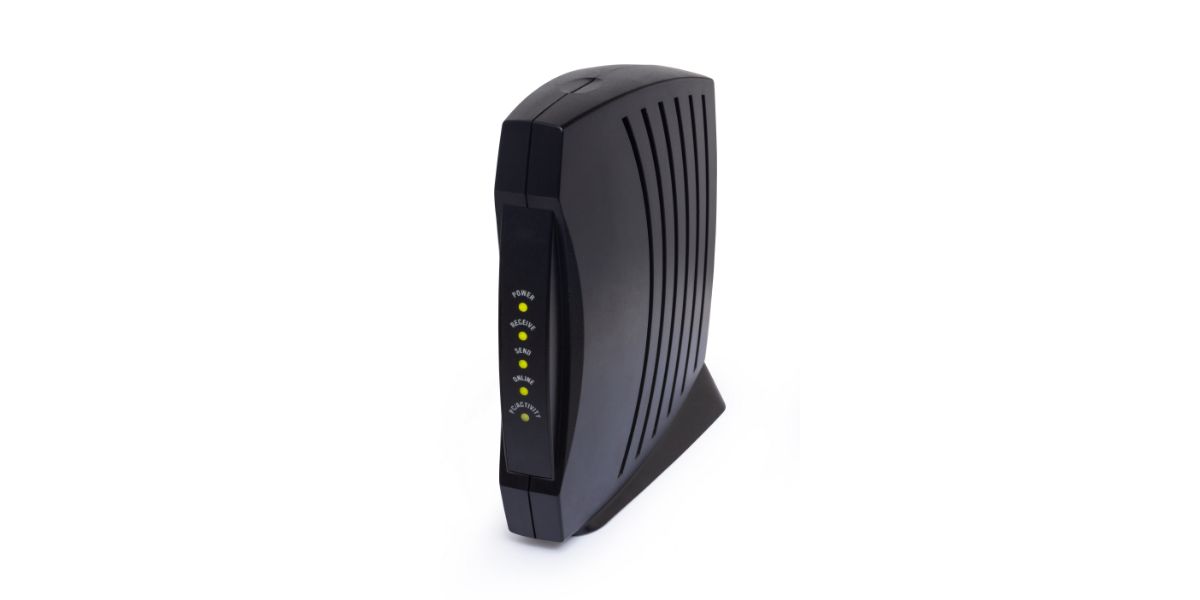Disclaimer: This post may contain affiliate links, meaning we get a small commission if you make a purchase through our links, at no cost to you. For more information, please visit our Disclaimer Page.
In today’s technology-centric world, a modem is crucial in most homes to keep us connected to family, friends. It also allows us to access online accounts and pay our bills.
But, like any continuously running device, modems are prone to overheating. That’s why learning to recognize the signs of overheating modems (plus the tips to cool them down) is crucial for the optimum functionality of your device.
Table of Contents
What Causes A Modem To Overheat?
It’s normal for a modem to be warm when running; anything up to 90 degrees Fahrenheit is generally considered safe. Still, if your modem heats up beyond this temperature, it could cause issues.
There are many reasons why a modem can overheat; sometimes, it’s simply because they’ve been running too long. Still, there are some common reasons why modems get hot, including the following:
1. A Lack Of Adequate Ventilation
Most modems possess a simple cooling system, leaving them vulnerable to overheating if they aren’t stored in an adequately vented space. For example, modems kept in closed cabinets or boxes are most likely to experience insufficient air circulation that causes them to overheat.
Remember that the more activity you engage in, the harder your modem will need to work. For example, suppose you have a household with multiple people streaming content and playing video games simultaneously. In that case, your modem will work harder to maintain consistent signals to each one.
Consider how hard you make your modem work and ensure you provide sufficient ventilation to account for this.
2. Modem Model
Remember the days of dial-up, when many households had a single computer used mainly for research or emails? Things have changed a lot since then and continue to evolve rapidly.
As our downloads increase, we stream endless content and use multiple devices simultaneously; our modems must work harder. For this reason, keeping your modem up to date is essential.
If you’re still using an old modem (five or more years old) and have since acquired more devices, you might find it struggles to keep up and overheats. This is why it’s vital to ensure that your current modem has the capacity to deal with the number of devices in your household.
3. Modem Placement
The reason why your modem overheats could come down to its location. For example, placing your modem next to other electronic devices (that also generate heat) may prevent one another from ventilating correctly.
Avoid placing your device next to other items like wireless routers, speakers, or monitors, as this proximity could increase your device’s chances of overheating.
Similarly, if your modem is located near a window exposed to direct sunlight, you may experience problems with overheating. For this reason, the climate of your area and the changing seasons can also affect the temperature control of your device.
Signs Of An Overheating Modem
Learning how to spot the signs of an overheating modem can help you address issues early on to prevent damage to your modem or its surrounding area.
Your Internet Connection Is Slower Than Usual
Many modems come with inbuilt safety features that will cause them to shut down if the heat build-up becomes too great. As the heat builds in your device, you may notice that devices start to lag as your internet speed reduces. If it gets too hot, you could lose your internet connection altogether.
Depending on the manufacturer and product, there could be other inbuilt safety features, such as lights that indicate an overheating device.
Before you set up your modem, it’s a good idea to read the user guide to familiarise yourself with these features and check on your device now and again to ensure it’s running smoothly.
Damage To Hardware
If the elements of your modem become dangerously hot, they can cause damage to the system’s hardware. When this happens, one or more of the components may fail altogether, so regardless of whether you allow the modem to cool down, it may still cease to work correctly.
If this happens, you can purchase replacement parts, but sometimes replacing the entire modem is easier (and more effective).
4 Ways to Prevent Overheating
1. Place It In An Open And Elevated Location
Placing your modem in an elevated position can provide sufficient space to “breathe.” The added benefit is that modems placed in higher locations offer greater internet coverage in your home.
Ensuring your modem is adequately ventilated may be crucial in keeping it cool. For this reason, you must read the user manual beforehand to understand how to look after your device.
For example, many modems must be placed horizontally on their bases to avoid vent blockage. Never assume you can place a device on its side for prolonged periods – especially if you can see that the device’s vents are located on its sides.
2. Clean Your Modem At Regular Intervals
Cleaning your device regularly is a great way to ensure it continues to perform well. One of the biggest challenges for a modem is fighting against dust build-ups that block vents and prevent optimum airflow.
Keeping your device dust and grime free helps to prevent blockage and allows your device to function properly for longer. If your internet speed is lagging, it’s worth checking that the vents on your modem are free of dust and other obstructions.
3. Ensure The Location Of Your Modem Is Well Ventilated
Your modem should be kept in a well-ventilated space with regulated temperature and humidity for optimum functionality. Attics or basements can sometimes be used for modem placement, but they often do not provide enough ventilation.
Instead, opt for a well-aired room in your house, where ventilation is good, and your device will have the right conditions to “breathe.”
Avoid placing your modem in direct sunlight, and if you notice that it’s prone to overheating, try attaching a small fan to help direct hot air away from the device. If you want something more elaborate, try a purpose-built cooling pad instead.
4. Turn Off Your Modem When It’s Not In Use
This can be one of the most tricky steps to implement, as many of us require our devices to stay connected to keep important communication lines open.
Still, turning off your modem now and again allows it to cool down completely. Next time you go away for the weekend or vacation, try turning your modem off to give it a break.
If you exert high usage on your modem, consider buying two devices to swap them over at regular intervals. This ensures you maintain a good connection while preventing your modem from overheating.
Final Thoughts
When you think about how much work your modem does all day, every day, it’s easy to understand how and why these devices sometimes overheat. Still, taking steps to prevent this is important to avoid damage and reduce hazards.
The best ways to prevent your modem from overheating are to select the right location, provide adequate ventilation, clean it regularly, and keep the product up to date. Remember, modems don’t have too many moving parts, so with a little TLC; they are easy enough to maintain.


